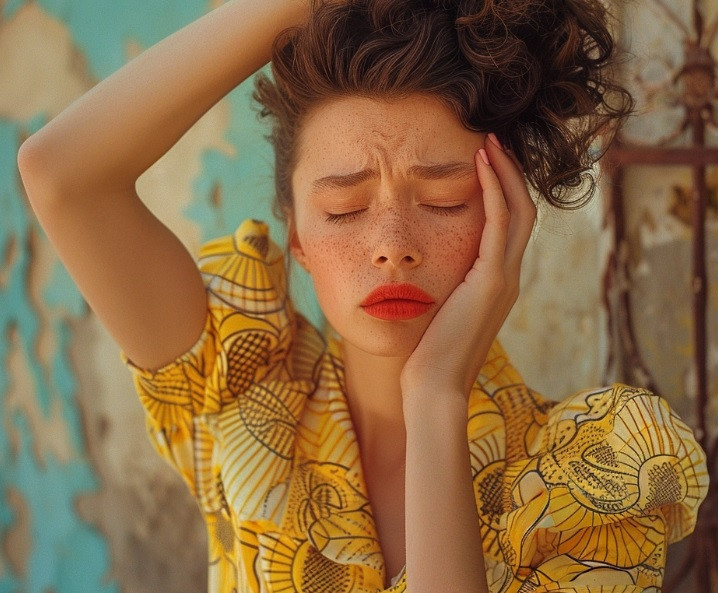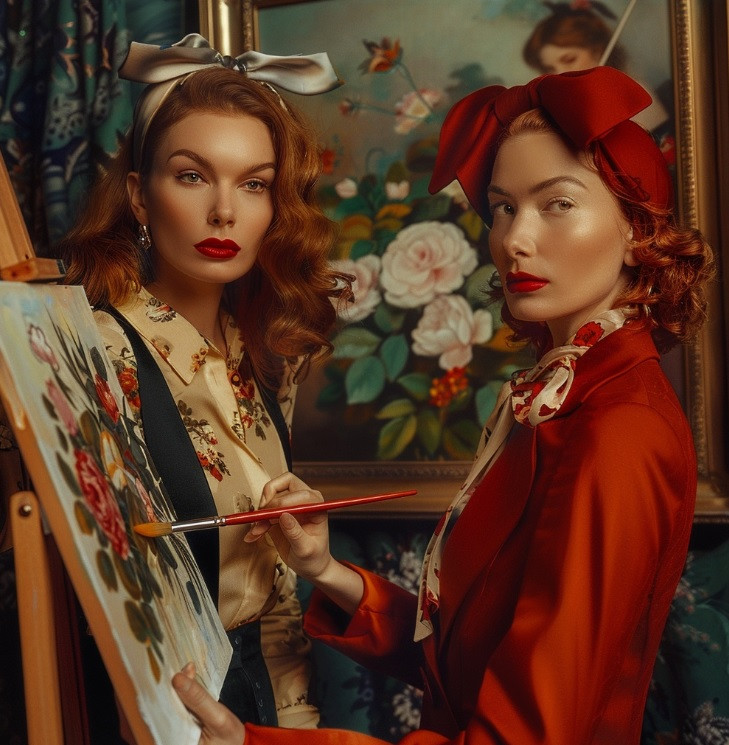
Creativity can serve as a mirror to women.
It reflects our multifaceted, multi-dimensional lives. It allows us to navigate through our thoughts, emotions, and experiences in a therapeutic manner. It empowers us. Creativity is not just about crafting art; it's about crafting the self, nurturing the self, and establishing an inner dialogue that fortifies resilience, innovation, and confidence. Whether it's painting, writing, dancing, or any form of artistic endeavor, these activities become pathways to joy and self-discovery, helping women to thrive.
For those of us who struggle to simply sit down and "meditate", creativity serves as a source of meditation; allowing us to overcome anxiety by immersing ourselves in our craft and letting our minds wander.
Moreover, engaging in a creative practice can also offer women a sense of community and belonging, connecting them with like-minded souls who share their passions and struggles. This can foster a supportive environment where ideas are born, and accomplishments are celebrated, fostering a feeling of achievement and belonging.
As women carve out time to create, they not only sharpen their skills but also begin a journey of personal growth and fulfillment. Thus, embracing creativity is not just a leisurely pursuit but a vital component of well-being, enabling women to find their voice, assert their independence, and unleash their true potential.
1. Painting and Drawing: Unleashing the palette of emotions through colors and shapes, enabling personal expression in the most vibrant forms.
2. Writing: From journaling to blogging, poetry to storytelling, writing serves as a powerful avenue for sharing perspectives, healing, and inspiring others.
3. Dance: A physical form of creativity, dancing allows for self-expression through movement, offering both emotional release and physical health benefits.
4. Gardening: Cultivating a connection with the earth through planting and nurturing seeds, flowers, and plants offers a serene and grounding creative outlet.
5. Photography: Capturing moments, framing perspectives, and telling stories through the lens provides a unique avenue for artistic expression and appreciation of the world.
6. Fashion Design and Makeup Artistry: Expressing individuality and creativity through clothing, accessories, and makeup application, allowing for a personal statement in every stitch and design.
7. Cooking and Baking: Transforming ingredients into dishes is not just an act of nourishment but an art form that brings joy and satisfaction through flavors and presentation.
8. Music: Whether it's playing an instrument, singing, or songwriting, music opens up profound channels for emotional expression and connection.
9. Pottery and Sculpting: Shaping materials with hands into beautiful objects not only is therapeutic but also gives a tangible form to creativity.
10. Crafting and DIY Projects: Engaging in various crafts such as knitting, scrapbooking, or upcycling projects fosters innovation and gives a productive outlet for imaginative ideas.
These creative outlets not only help in enriching a woman's life with joy and satisfaction but also empower her to explore and embrace her unique identity and capabilities.


Understanding your budget before beginning an interior design project is crucial for both you and your designer.
It ensures that your designer can tailor their resources most effectively within your financial parameters.
With a clear budget in place, your designer can make informed decisions on materials, furnishings, and labor costs, avoiding wasteful overspending while ensuring that the project aligns with your financial comfort zone. This upfront transparency fosters a smoother design process, ensures that your expectations are realistic, and helps in delivering a final outcome that brings your vision to life without any unwelcome financial surprises.
Clear Expectations: Knowing your budget helps set realistic expectations on the scope, materials, and furnishings, ensuring a harmonious designer-client relationship.
Efficiency in Design: A predefined budget streamlines the selection process for materials and products, saving time and focusing efforts on attainable solutions.
Cost-effective Solutions: A well-planned budget allows designers to recommend cost-effective alternatives that don't compromise on aesthetics.
Flexibility with Priorities: Understanding your budget gives designers the flexibility to allocate resources effectively—prioritizing key areas while identifying potential savings elsewhere.
DIY Virtual Design Packages: For those mindful of budgets or preferring a hands-on approach, many designers offer virtual design packages. These cater to various budget levels, providing professional guidance and resources for a successful DIY interior project.
A few questions to consider when doing Design on a budget:
Which rooms are the most used?
Often times a Designer can allocate dollars to a room that is more important to you. For example, the sofa you sit on every day should be of good quality to wear well whereas the headboard in a guest room could be a more affordable option as it only needs to look great, but does not need to be of the same quality for everyday wear and comfort.
Are there any decor items that could be repurposed and used in a new in different way?
Sometimes this can save you money and sometimes it can be more expensive. A fresh coat of paint on a table is a great way to save whereas reupholstery can cost as much as a new piece and is usually only advised for heirloom treasures.
If you feel you have some pieces worth repurposing, take a full inventory of them at the beginning of a project for yourself or your Designer. Your Designer must know all the pieces of the puzzle in the beginning as fabrics, finishes and space planning include these items. Bringing these repurposed items into the mix in the middle of the project will usually end up costing you money in design fees as they can disrupt a whole room plan and cause more billable hours.
What parts of your project are most urgent?
Splitting up a project into phases keeps costs manageable and helps you break down decisions into manageable pieces.
It is important, however, when working with a Designer to have a broad stroke, master plan in place at the beginning so that the space as a whole has a cohesive appearance.
Communication is key! The more you communicate with your Designer ( or map things out for yourself to make sure you aren't forgetting any of your own needs) in the beginning, the more easily a budget can be met.


